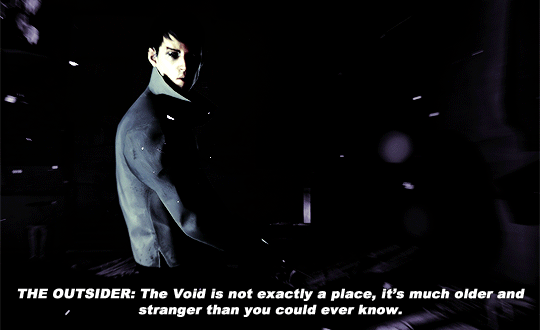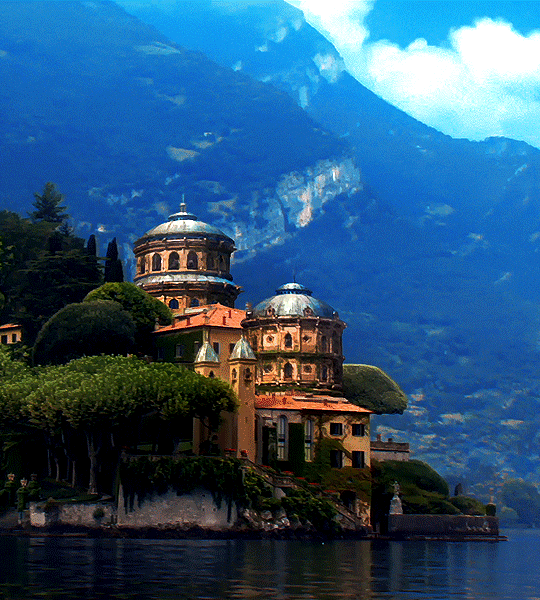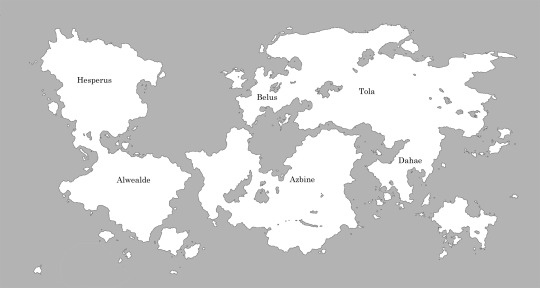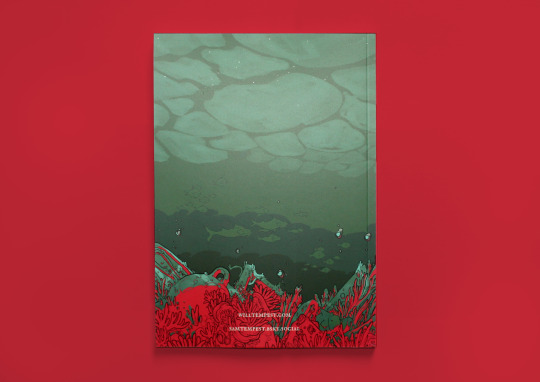#campaign setting
Explore tagged Tumblr posts
Text

Night Below, "the first epic campaign adventure for AD&D," takes the party from level 1 in the pleasant town of Haranshire to level 10 and beyond in the depths of the underdark, facing illithids, kuo-toa, derro, and the monstrous tentacled rulers of the Sunless Sea (Jeff Easley box art for 3-book set designed by Carl Sargent, TSR, 1995)
#D&D#Dungeons & Dragons#Jeff Easley#Night Below#underdark#dnd#illithid#mind flayer#kuo toa#derro#aboleth#AD&D#D&D 2e#AD&D 2e#Carl Sargent#campaign setting#Sunless Sea#TSR#Dungeons and Dragons#1990s
170 notes
·
View notes
Text
Pitch me your homebrew campaign setting!
I'm not gonna use them for anything, I just wanna know what folks have come up with. :)
Doesn't need to be one made from whole cloth, it could be something like the World of Darkness which is our world but suckier and with vampires and such.
But here's the catch: you gotta pitch it to me like a movie trailer, and must start with "In a world…"
120 notes
·
View notes
Text
Crown of Candy: A Campaign Setting for 5e

Introduction
The land of Calorum is a world of edible kingdoms, each representing different types of food, embroiled in political intrigue, war, and divine intervention. Inspired by Crown of Candy, this setting blends high-stakes fantasy with absurd and dramatic food-based storytelling.
Core Themes:
Political Intrigue & Betrayal: The noble houses and kingdoms are in constant power struggles, with shifting alliances and dangerous gambits.
Heroic Tragedy & High Drama: Expect battles with devastating consequences, and choices that shape the future of nations.
Food-Based Fantasy: The world and its inhabitants are inspired by different food cultures, leading to creative character designs and locations.
---
Chapter 1: The World of Calorum
Geography & Notable Locations
Calorum is divided into several food-themed regions, each ruled by its own monarchy and traditions.
The Kingdom of Candia (Candy & Sweets)
Capital: Castle Candy
Culture: A kingdom of knights and honor-bound warriors, where chivalry and royal bloodlines reign supreme. The people are made of confections, from chocolate bar soldiers to gumdrop squires.
Notable Locations:
Castle Candy – The royal palace, adorned with sugar-glass spires.
The Jelly Jungles – A vibrant, semi-solid rainforest of bouncing jellies.
Licorice Mines – Treacherous caverns where black licorice veins twist like roots.
The Dairy Islands (Cheese, Milk, and Dairy Products)
Capital: Fondueford
Culture: Seafarers and merchants, the Dairy Islands are a maritime trade hub. Their navy is powerful, with warships of hardened parmesan and cheddar ballistas.
Notable Locations:
The Gorgonzolan Abyss – A deep trench filled with glowing bioluminescent blue cheese creatures.
Butter Bay – A dangerous, slippery coastline where dairy pirates lurk.
The Meat Lands (Meats & Savory Dishes)
Capital: Meatchunk Keep
Culture: A warlike region where might makes right, and feasts celebrate victory. The ruling clans settle disputes in brutal pit fights.
Notable Locations:
Bloodgrill Arena – A colosseum where warriors duel for dominance.
The Sausage Steppes – Rolling plains of linked meats stretching to the horizon.
Vegetania (Vegetables & Fruits)
Capital: Greenhold
Culture: A kingdom of druids and scholars, focused on nature, medicine, and diplomacy.
Notable Locations:
The Avocado Canyons – Treacherous cliffs filled with rolling stone pits.
The Broccotree Grove – A vast forest where elders commune with the gods.
The Grain & Starch Dominions (Bread, Rice, Pasta)
Capital: Crusthaven
Culture: A mix of nomadic traders and industrious bakers, their power comes from controlling food supply routes.
Notable Locations:
The Great Spaghetti Falls – A cascading river of never-ending pasta.
The Sourdough Bastion – A fortified bakery monastery where monks perfect the art of battle bread.
---
Chapter 2: The History of Calorum
Notable Historical Events
The War of Rot and Frost: A catastrophic conflict when an ancient Lich-Lord of Spoiled Food attempted to spread decay across Calorum.
The First Bakers' Rebellion: The revolt of the Grain Kingdom against Candia, demanding freedom from royal tariffs on bread and rice.
The Dairy Purge: When rogue sorcerers attempted to turn the ocean into cheese, nearly destroying the Dairy Islands.
---
Chapter 3: Playable Races of Calorum
Candyfolk (Candians)
Ability Score Increase: +2 Charisma, +1 Dexterity
Traits:
Sugar Rush: Once per long rest, you can Dash as a bonus action.
Sticky Resilience: Advantage on saving throws against being grappled or restrained.
Delicious: Beasts and hungry creatures have advantage on bite attacks against you.
Meatfolk (Carnisians)
Ability Score Increase: +2 Strength, +1 Constitution
Traits:
Blood of the Beast: Resistance to poison damage.
Carnivore’s Fury: When below half HP, gain advantage on melee attack rolls.
Dairyfolk (Lactites)
Ability Score Increase: +2 Wisdom, +1 Constitution
Traits:
Chilled Resistance: Resistance to cold damage.
Gooey Form: You can squeeze through spaces as if you were one size smaller.
Vegetablefolk (Verdanians)
Ability Score Increase: +2 Intelligence, +1 Constitution
Traits:
Hardy Stalk: You require half as much food to survive.
Photosynthesis: During a short rest in sunlight, regain an extra 1d8 HP.
Grainfolk (Starchians)
Ability Score Increase: +2 Dexterity, +1 Intelligence
Traits:
Yeast Surge: Once per long rest, you can grow one size larger for 1 minute.
Crumbly Defense: When hit, roll a d6; on a 6, the attack deals half damage.
---
Chapter 4: The Pantheon of Edible Gods
The Great Oven (God of Creation & Baking) – Worshiped by Grainfolk and pastry priests.
The Butcher Saint (God of War & Meat) – Patron of the Meatfolk warriors.
Mother Milk (Goddess of Comfort & Dairy) – Protects sailors and mothers alike.
The Verdant Hand (Deity of Nature & Growth) – Revered in Vegetania.
---
Chapter 5: Faith of The Bulb
The Faith of The Bulb: The One True Light
The Faith of The Bulb is a theocratic and totalitarian religious order that seeks to unify all of Calorum under a singular, absolute faith. Worshippers of The Bulb believe that it is the first and only divine truth, a celestial force of illumination and sustenance that brings order to a chaotic world. Any competing faiths, traditions, or beliefs are considered heresy—falsehoods that must be purged for the good of all.
The Faith of The Bulb is not just a religion—it is a regime, a political entity, and a militaristic force bent on absolute dominion.
---
Doctrine and Beliefs
The Bulb is the Source of All Nourishment. Just as a plant grows from a seed buried in the dark, The Bulb grants light and truth to those who follow it. To reject The Bulb is to reject life itself.
All Other Gods are Lies. The Butcher Saint, The Great Oven, Mother Milk—these are distortions of the truth, remnants of a chaotic past. The Bulb is the singular, supreme deity.
Heresy is a Rot That Must Be Cut Away. Those who do not submit to The Bulb must be converted or cleansed. There is no middle ground.
The Faithful Shall Be Rewarded with the Eternal Harvest. Devout followers are promised a place in The Luminous Orchard, a paradisiacal afterlife where their spirits bask in The Bulb’s endless warmth and sustenance.
The faith is highly ritualistic and intolerant of deviation, enforcing its doctrines through strict laws, inquisitions, and military might.
---
Hierarchy of The Bulb’s Faithful
1. The Grand Luminary (Supreme Pontiff)
The singular ruler of The Bulb’s faith, the Grand Luminary is considered the living voice of The Bulb. Their word is law, their vision absolute. Only one Grand Luminary exists at a time, chosen through "divine revelation"—though in reality, the succession is often orchestrated through power struggles and assassination.
2. The Council of Illumination
The Grand Luminary is advised by twelve High Shepherds, each overseeing a different region of Calorum. The Shepherds enforce the faith’s will, directing military actions and inquisition efforts.
3. The Inquisition of The Bulb
The militant arm of the faith, the Inquisition is tasked with rooting out heresy at all costs. Its members are known as The Blazing Hands, feared for their brutal tactics. They conduct public purges, interrogations, and forced conversions.
4. The Congregation of the Faithful
Common worshippers must adhere to strict laws of devotion, attending daily sermons and participating in The Offering, a ritual where food is burned in honor of The Bulb. Failure to participate can result in imprisonment or worse.
---
Methods of Control and Suppression
1. The War Against False Faiths
The Bulb actively wages war against other religions. Priests of The Great Oven, druids of The Verdant Hand, and even warrior-cults of The Butcher Saint are hunted down. Their temples are razed, their followers forced into reeducation camps or executed as heretics.
2. The Cleansing of Literature
All historical records that contradict The Bulb’s doctrine are burned or rewritten. Even children's fairy tales are altered to reinforce the faith’s dominance.
3. The Purification of Names
Citizens are forced to abandon surnames tied to old gods. A child once named Bakerus, after the Great Oven, might be renamed Lumon or Radias to honor The Bulb.
4. The Heretic Trials
Public spectacles of punishment, Heretic Trials are designed to instill fear. Those accused of worshipping old gods are subjected to The Trial of Light—exposure to The Bulb’s sacred radiance, which in reality is an agonizing magical brand that sears their flesh. If they do not "confess," they are burned at the stake in a ritual called The Purge of Shadows.
5. The Conversion of Cities
Entire cities are brought to heel through forced conversion ceremonies. Worshippers of other gods are gathered into the central square and given a choice:
Renounce their old gods and swear eternal loyalty to The Bulb.
Face The Luminous Cleansing—public execution by radiant fire.
---
Symbols and Worship
Symbol of The Bulb: A golden onion-shaped bulb, radiating light, often held by a hand of fire.
Sacred Rituals:
The Offering – Food is burned in reverence to The Bulb.
The Morning Illumination – Every citizen must stand outside and face the sun, chanting prayers.
The Luminous Blessing – Converts are anointed with holy oil, which is often mixed with a mild hallucinogen to induce “visions.”
Holidays:
The Day of Sole Light – A day where no other gods can be spoken of, under penalty of death.
The Cleansing Festival – A weeklong purge of known heretics.
---
The Resistance Against The Bulb
Not all accept The Bulb’s rule. Underground movements operate in secrecy, seeking to preserve lost knowledge and protect old faiths. Secret monasteries of The Great Oven, hidden camps of Butcher Saint warriors, and rogue druids of The Verdant Hand fight to reclaim Calorum’s religious freedom.
But with The Bulb’s power ever-growing, resistance is costly—and betrayal lurks in every shadow.
#world building#dnd campaign#campaign setting#dungeon master#dungeons and dragons#dimension 20#brennan lee mulligan#crown of candy
12 notes
·
View notes
Text
Small dnd/worldbuilding thought today: why don’t more people play around with “flat earth” type worlds?
Obviously no world is flat, but it’s such a fantastical idea that it’s a shame not more people play around with it. The OG is clearly “Discworld” by the late and great Terry Pratchett (I think his estate has a Discworld TTRPG set to release soon). But my goal is that by 2026 I have a unique flatworld setting.
#dnd campaign#campaign setting#dm thoughts#game master#dnd 5e campaign#dnd#dnd thoughts#fantasy worldbuilding#worldbuilding#fantasy#fantasy world
10 notes
·
View notes
Text
D&D elves

#dungeons and dragons#faerun#forgotten realms#dragonlance#contagion#dark sun#eberron#warlords of the accordlands#ravenloft#dnd#D&D#campaign setting#elves
21 notes
·
View notes
Text

freeeee https://drive.google.com/file/d/1Fozjco8xrbQMpdJBX-UopZ3JlSOcHKg2/view?usp=sharing
#d&d#tabletop rpg#dungeons & dragons#gaming#tabletop#dungeons and dragons#rpg#campaign setting#Mists of Akuma#free#dnd 2024#dnd5e#dnd
7 notes
·
View notes
Text

Commissions open!!
Here's the character I did:
Face: The character should be a female Aldarin human (Aldarins are essentially Romans, so quite dark tanned skin), Facial structure-wise, wide jaw between 25 and 30 years of age.
Hair: with long brownish-blonde hair, braided as per the reference photo.
Build: her body showing her as quite muscular (lots of exercise walking around the city in heavy armour!).
Outfit: They are better funded than The Legions, so their roman style armour is made of iron and steel rather than bronze. The skirt part of the armour comes down closer to the knees, as would the tassles/baltea (dangly strappy bits). Include the Emblem of Permadecio on her chest armor.
Outfit color: Black and a dark navy. The shield worn by them would be a much larger shield, more in line with traditional Roman scutum.
Shield: This shield would be the same blue and black as the armour, with the Permadecio emblem on it. The eye of the emblem would be centered around the boss with the pupil being the boss itself.
Cape: On her left shoulder, the one not decorated with the gryphon design, she would wear a shoulder cape. This is currently fashionable in the present Aldarin era. The cape would come down a bit past her knees, but only cover her shoulder and that side of her body (added references for this).
Cape color: The cape would have a silver lining, a black exterior, dark navy/blue interior, and maybe some blue patterning along the black (feel free to play with this design!).
Footwear: She should be wearing roman style sandals which come up about half-way to the knee. Again, feel free to play with the design of her outfit a bit, keeping practicality in mind.
Belt and belt items: On her belt, she would have a waterskin, a coin pouch, a clip pouch for carrying food rations, and a pair of vials with healing drafts inside (these would appear a magical red in colour). Not all these need to be visible in the illustration, just listing what she has to let you decide what can be seen. She would also have a scabbard for a gladius, a Roman shortsword. She might be wielding the gladius, or have it holstered, depending on the pose you go for.
Overall colour: Blacks, greys, dark blues, navy, silvers (if you think any other colours might work here, feel free to experiment!)
Emblem
The Permadecio emblem is a white eye with two feathered wings protruding from behind it. The intent is to state “we are always watching”, with the wings referring to the speed at which they move to help their clients. The pupil of the eye might be silver or a dark navy, depending on where it sits.
#my art#dnd#dnd art#dnd character#commission art#dnd5e#art#commissions#d&d#dnd oc#rome#ancient rome#Vynestra#campaign setting#npc
8 notes
·
View notes
Text
Idea for a Pact Dice sandbox campaign setting: for reasons specific to each character, practitioners are obligated to spend a year within a small tourist-trap sort of beach town. Not a super popular one, but the sort with evenly-split on- and off-seasons, where the condos lie empty and the tacky t-shirt shops go into hibernation until things warm up again. Ideally players get to decide which half to start with.
In the spring-summer half, the town is bright and hectic and full of moving parts. Deals, trades, arrests, celebrations, people lost at sea, thunderstorms against the horizon, entities that siphon human jubilance or practitioners seeking the anonymity of the crowd for their own reasons.
In the autumn and winter months, the underlying community coagulates into a smaller portion of the town, and visitors wear out their welcome quickly. The unoccupied condominiums and closed storefronts make it a good place for hiding out, whether you're a human or an Other, but part of the town itself is almost detached from the spheres of ordinary human life. And throughout, forces in the ocean finally have opportunity to act without being noticed.
12 notes
·
View notes
Text
A dieselpunk space opera inspired by Ghibli films, Batman the Animated Series, Bioshock, Dishonored, and Star Wars. How's that for a campaign?





#pathfinder#starfinder#campaign setting#science fantasy#dieselpunk#studio ghibli#batman the animated series#bioshock#dishonored#star wars#shadows and light
41 notes
·
View notes
Text
In my campaign setting I'm working on, there's a god of medicine & poison and in my head I pronounced it like fettucine and croissant
#the carl wheezer way of saying croissant#are you going to eat that KWAH SAU#d&d#d&d 5e#dnd#dnd worldbuilding#campaign setting#more sillyposting#i cant wait to infodump an entire landfill onto someone about this#hey... ask me about my campaign setting... 🥺👉👈#the beast shouted
3 notes
·
View notes
Text

#WORLD52 WEEK 2 SUBMISSION:
JSA RAPID REACTION FORCE OPERATOR
Another week of #WORLD52 is upon us, Voyagers! This week I'll be turning my attention back to my SCIFI SPACE OPERA TTRPG setting:

Namely, to the EVANTI SECTOR, the location of my current actual play livestreamed campaign (Every other Saturday at 1:30pm EST. We'll be returning in two weeks, so keep an eye out for the alert!) The JOINT SYNDICATE ALLIANCE, one of the major powers in the region, is basically a cooperative venture between half a dozen major interstellar corporations, and doesn't have the manpower to actively claim territory in the classical sense. Instead, they hire thousands of mercenaries to make ad hoc security fleets, reacting to emergent threats with overwhelming force and terror tactics to suppress the local populace. Here we see one of the Rapid Reaction Force's Operators, clad in a hardsuit, ready to drop from orbit into a hotspot and crush local resistance.!

Thanks for joining me in this week's #WORLD52!
We'll be back next week with more, so keep an eye out!
#artists on tumblr#my art#digital art#world52#worldbuilding#ttrpg art#ttrpg#character art#powered armor#science fiction#scifi#scifiart#hardsuit#mecha#power armor#LEGACY#LEGACY First Flight#homebrew setting#homebrew#space opera#JSA#corporate#ttrpg campaign#ttrpg campaign setting#campaign setting#robotic
4 notes
·
View notes
Text

We're not in Greyhawk anymore (Keith Parkinson cover for Book 3: Crossing Over from AD&D campaign adventure Tale of the Comet by Thomas M Reid, TSR, 1997).
After stopping an alien invasion in a remote rural village, the PCs "must then pass through a portal to another battleground, a metal city on a far-distant world, where aliens fight desperately against death machines that threaten to overwhelm all organic life. So trade in your sword for a blaster rifle, your sling stones for a few high-explosive grenades, and see what happens when you mix magic with high technology."
#D&D#Dungeons & Dragons#Keith Parkinson#sci fi#Tale of the Comet#robot#android#alien#spacesuit#dnd#Thomas M Reid#AD&D#D&D 2e#AD&D 2e#science fantasy#campaign setting#TSR#Dungeons and Dragons
81 notes
·
View notes
Text

The Empire of The Isles
————————————————————
I made this as a map for a homebrew nautical D&D campaign setting. This was a lot of fun to make, especially all of the little place names.
Leave a comment to let me know your favourite place name!
N.B. Blorcester is pronounced both as “Bluster” or as “Blosster” depending on what dialect you speak.
#digital art#artists on tumblr#my art#dnd#maps#fantasy#fantasy map#nautical#islands#d&d campaign#campaign setting#dnd maps#fantasy maps#worldbuilding
12 notes
·
View notes
Text

Dev Journal 2: The world of Tellus
This is the current draft version of the world map for my homebrew campaign setting. It was cobbled together using a mix of Fractal Terrains 3, Photoshop, and Wonderdraft. It's been interesting going through each iteration and trying to land the particular combination of alien and familiar that I want to achieve. If a fantasy world is too Earthlike, it becomes difficult to break away from expectations of what will be found in each area. But if its too alien, the player's expectations of what might be found in a region become harder to visualize. This particular version has not quite accomplished what I'm trying to find yet, future iterations will likely venture more into the alien side of the spectrum. However, this is a good start and while this world is quite familiarly shaped, it'll have some very interesting geopolitics. As a starter, you may notice that there's not much distance between many of the continents. Seagoing exploration by the Tellus equivalent of the Greeks, Phoenicians, and Polynesians would have likely achieved something equivalent to the Colombian Exchange much earlier than our world. Likewise, trade between the Orient and Occident is much easier, which will create some fascinating opportunities for cultural exchanges. Vast quantities of wealth flow through these vital trade arteries, meaning that any nation with ambitions of being a power worth considering will require a substantial fleet to protect their interests. Tellus is still embarrassingly underdeveloped so far, with vast amounts of blank space in my documents, but I'll provide a brief description of each continent and its major powers and provide more details later. Names are all provisional and may be changed in future drafts; I like to use placeholders and end up changing them frequently. In the descriptions below I include equivalents to RL nations, this is meant as a reference to their closest geopolitical analogue, not that they are necessarily clones of that state. Belus: Obviously this world's equivalent to Europe, differentiated largely by the presence of an inland sea. Directly to its north is the Grey Sea, to the south is the Medial Sea. Its greatest power is the Second Empire of Abdera; a sprawling feudal mess equivalent to a super-HRE, stretching from this world's equivalent of Spain to Germany. More often at war with itself than outside powers, the Second Empire's stability and prestige have had an alarming decline due to the emergence of the Republic of Brennos (eqv. Napoleonic France) within its former territories. The Second Empire's neighbors, particularly Dynne (eqv. Great Britain) play a delicate game of exploiting Imperial weakness while trying not to throw the continent into complete chaos. To the east, the Empire of Melate (eqv. Ottomans) are recovering from a century of decline with a reformist empress on the throne. Their strategic position and the exhaustion of their Belusan rivals fuel the ambitions of elven revanchists.
Azbine: Essentially Africa, Azbine is a huge & diverse continent in terms of politics, climate, geography, and population density. Its northwest coast is largely divided up into feudal possessions of the Second Empire, as well as daughter republics of Brennos legitimized by peace treaty. The northeast corner, south of the large peninsula that is Melate's heartland, are the Majeri Republics (eqv. Venice); an oligarchic federation of city-states that are wealthy and loyal protectorates of Melate. Their cities are among the wealthiest on the planet thanks to the trade routes they sit upon. Along the eastern coastline are small kingdoms and city-states that also thrive on (or prey upon) trade between Azbine and Dahae, as well as Alamgiri colonies (see Dahae below).
Nirimzad (eqv. Congo Free State), the vast territory of a clan of green dragons, encompasses the circular sea in central Azbine and its surrounding coastline. The dragons squabble and intrigue against each other, unified only in extracting as much wealth as possible from their hunting ground. Their warlords and slave armies would likely overrun much of the central continent were they not constantly pitted against each other for the entertainment and petty grudges of the dragons. Alwealde: South America, duh. The northeast coast is primarily occupied by the Kingdom of Selvas - a secessionist colony from the Second Empire that's also a feudal mess of direct colonial holdings and integrated native vassals. A federation of city-states styled along the lines of the Delian League control the rest of the eastern coast; they are theocratic governments run by a priestly class with rulers descended from a planetouched bloodline. Hesperus: A handful of Belusan colonies with competing territorial claims squat on the coasts as well as the independent nation of Ladrinne (eqv USA) where the losing Parliamentary faction of the Dynnish civil war fled and established a government in exile. Ladrinne styles itself as the rightful government of the Dynnish islands. The old guard aristocrats are naturally fading away and being replaced by revanchist radicals inspired by the Brenne Revolution. Eastern Hesperus is easily a potential powderkeg for the next war, whether due to colonial competition or Ladrinne's parliament finally deciding to expel the monarchists from 'their' continent. Elsewhere in Hesperus, the natives are doing better than OTL, having never suffered the same population collapse from disease as that which followed contact. Tola: Obviously an Asiatic continent, Tola's central steppes are the domain of orcish tribes and petty kingdoms (eqv Mongols). To the west, Ryaz principalities and successor kingdoms to an old Orc empire crowd against inland seas and compete for coastal access. To the east are the Golden Lands, the richest agriculture lands in the world thanks to a series of great lakes and high mountain glaciers that feed dozens of rivers. The agricultural wealth of the Golden Lands unfortunately also brings much ambition; the region is divided between six states with a variety of ideologies (eqv. Chinese warlord era)
Dahae: The Dahaen subcontinent is home to what's likely the most powerful empire in the world, Alamgir (eqv. Mughals). Alamgir's orcish ruling class possess sprawling lands teeming with millions, a strong export economy, and a large, well-trained military that is regularly tested in border conflicts with its neighbors. Alamgir shares the subcontinent and its archipelago with several other major powers and dozens of minor states.
12 notes
·
View notes
Text
A Quick Overview of Ozma
First post for new goal! Ozma is my main campaign setting at the moment (as my blog bio suggests) and it's definitely my favorite. Kind of a punk urban fantasy, inspired by random ideas me and my homies have had over the years. The first bit of thought was honestly what if a city ran on magic and had stuff like flying monkeys and stereotypical green witches, what if halflings were at a starbucks? That kinda thing, and it just spiraled from there into my lil baby. Intended for a Savage Worlds game, but honestly might even work on making info for other rpgs available too. So without further ado, a quick overview of Ozma, City of the Neon Sun.
OZMA, OVERVIEW
Long ago a terrible empire ruled over the land, the Elves sought to tame both their fellow mortals and the gods above. An awful and foul sorcerer taught the nobles how to bind the divine forces which watched over the various other peoples of the world. Gods bound in chains and drained of their life to extend the existence of the Elves. Even their own pantheon not safe from the hunger of the despicable nobles. This empire enslaved both mortals and the gods in such a fashion, plunging the world into a thousand years of tyranny.
Until the people grew weary, a coalition formed, the enslaved of all peoples bound together, freed a trapped god (who’s true name was long taken) and fought back! Its sacrifice showed many even among the Elves all was not lost, hope against evil always lived on. Stealing the sorceries of the nobles many Elves betrayed their Immortal Emperor and gave the secrets of magic to all, and then so fell the empire, so fell the Age of Darkness!
When the smoke cleared a new alliance was formed right there in the ruins of the old Elven capital, the forgotten god’s sacrifice turned quickly by the new Mages of the land into a powerful artifact to once more fight back against darkness. The Neon Sun was born, and with its energy a new city constructed right over the old; Ozma.
Now hundreds of years later Ozma is a bustling metropolis far greater than even the city of old, kept alight all hours of the day and night by a pulsating orb of magical energy known as the Neon Sun. It acts both as a statement that hope burns bright forever and allows all the modern magical conveniences of Ozma to work! From billboards to Orb-Book, trams to TV, they got it all, and all are welcome to the world’s greatest city!
Inside the Neon Sun the Council of Law watches over, representatives from every angle of Ozma picked by the Guilds, Unions and various ancient Orders which make up the kaleidoscopic streets. This Council makes the laws, enforces them and does their best (supposedly) to keep Ozma the number one metropolis around!
Underneath the bustling lit streets above rests the ancient ruins, Undercity (very creative I know). This expanse is said to be the gutted remains of the foul imperial capital, but it also consists of many layer of Ozma’s previous designs, and dark secrets. It was not just one city that was torn apart by the revolution for their new home, many portals and gateways connected all manners of the world in that time, the first Mages used these devices in their own plots and schemes at one point or another. So the Undercity contains everything from old Elven towers long collapsed, to forgotten vaults full of treasure to even more strange and delightful surprises pulled from other realms of existence! Its not uncommon for a slumbering Elven mage or two to wake up from a nap in some lost corner and not realize the Empire is no more (or try to reinstate it). Rumors even abound of still trapped gods in the depths, unable to be freed by the original coalition.
2 notes
·
View notes
Text



The Flood Bell Tolls in Saint Magnus by me, @samtempest.bsky.social and @kateeddy.bsky.social is now available! You can get printed versions over on my website. We also have a pay-what-you-want PDF available on itch
PDF
PRINT
8 notes
·
View notes